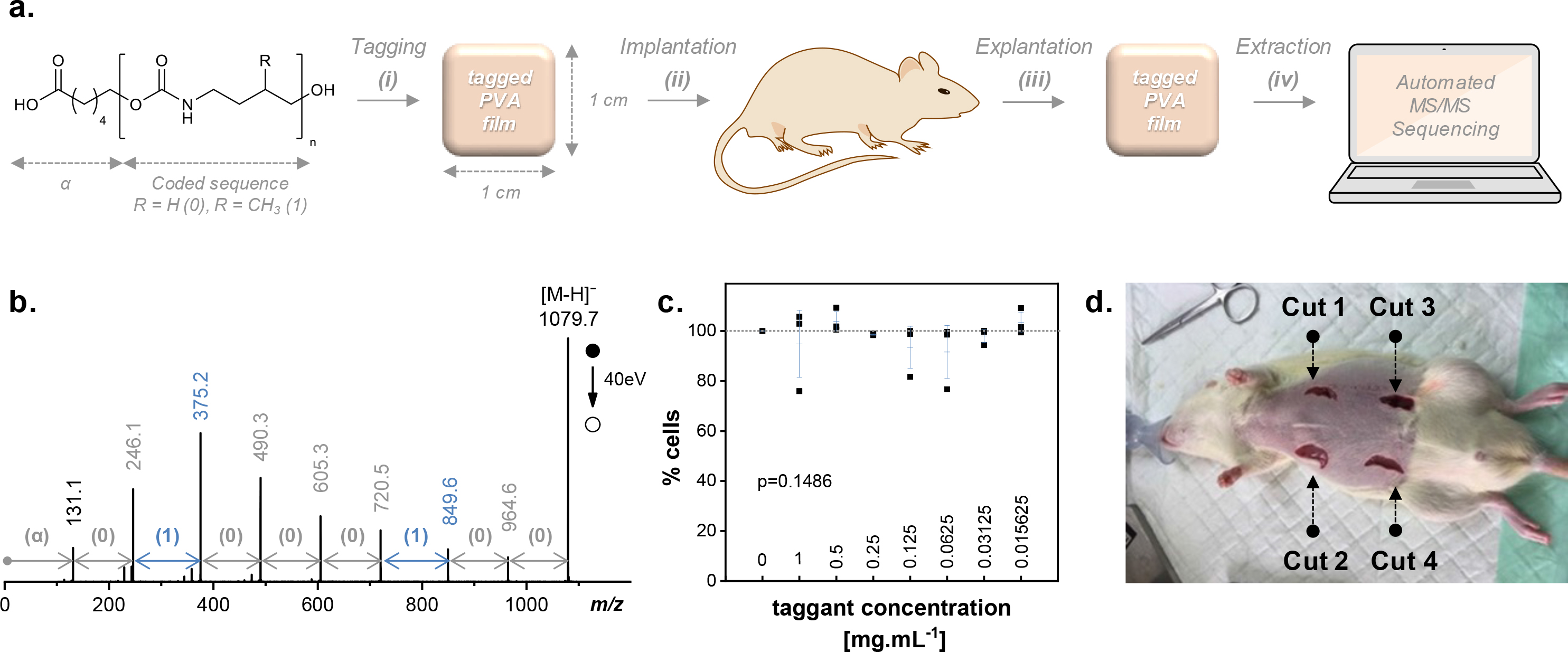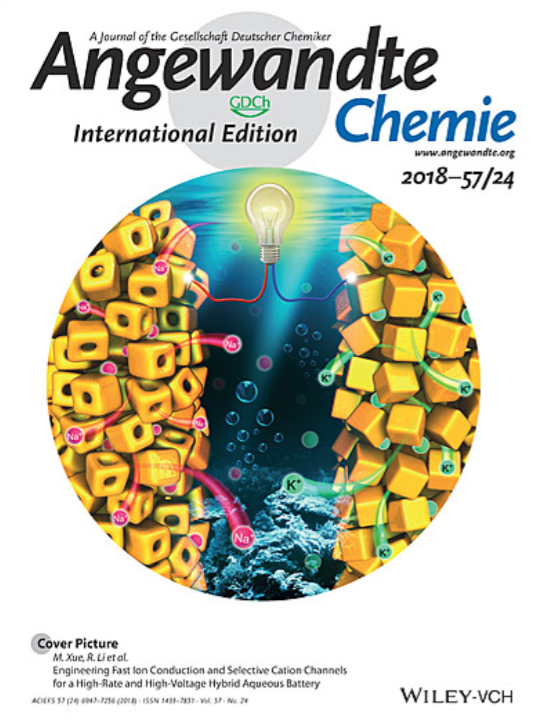Abiotic sequence-coded oligomers as efficient in vivo taggants for identification of implanted materials
Karamessini D, Simon-Yarza T, Poyer S, Konishcheva E, Charles L, Letourneur D, Lutz JF.
2018 • Angew Chem Int Ed Engl • [pdf]
 Sequence-defined oligourethanes were tested as in vivo taggants for implants identification. The oligomers were prepared via an orthogonal solid-phase iterative approach and thus contained a coded monomer sequence that can be unequivocally identified by tandem mass spectrometry (MS/MS). In order to simplify the use of these taggants, automated synthesis and sequencing protocols were developped in this work. Before testing them in vivo, cytotoxicity assays were performed and indicated an excellent cytocompatibility. The oligomers were then included in small amount (1 wt%) in square centimeter crosslinked poly(vinyl alcohol) (PVA) model films, which were intramuscularly- and subcutaneously-implanted in the abdomen of rats. After one week, one month and three months of in vivo implantation, the PVA films were explanted. The rat tissues exposed to the implants did not exhibit any adverse reactions, thus suggesting that the taggants are not harmful and probably not leaching out from the films; the latter aspect being confirmed by in vitro studies in physiological conditions. Furthermore, the explanted films were immersed in methanol, as a solvent for oligourethanes, and the liquid extract was analyzed by mass spectrometry. In all cases, the oligourethane taggant was detected and its sequence was identified by MS/MS.
Sequence-defined oligourethanes were tested as in vivo taggants for implants identification. The oligomers were prepared via an orthogonal solid-phase iterative approach and thus contained a coded monomer sequence that can be unequivocally identified by tandem mass spectrometry (MS/MS). In order to simplify the use of these taggants, automated synthesis and sequencing protocols were developped in this work. Before testing them in vivo, cytotoxicity assays were performed and indicated an excellent cytocompatibility. The oligomers were then included in small amount (1 wt%) in square centimeter crosslinked poly(vinyl alcohol) (PVA) model films, which were intramuscularly- and subcutaneously-implanted in the abdomen of rats. After one week, one month and three months of in vivo implantation, the PVA films were explanted. The rat tissues exposed to the implants did not exhibit any adverse reactions, thus suggesting that the taggants are not harmful and probably not leaching out from the films; the latter aspect being confirmed by in vitro studies in physiological conditions. Furthermore, the explanted films were immersed in methanol, as a solvent for oligourethanes, and the liquid extract was analyzed by mass spectrometry. In all cases, the oligourethane taggant was detected and its sequence was identified by MS/MS.

